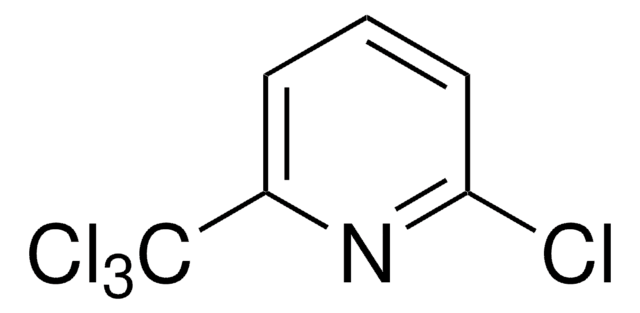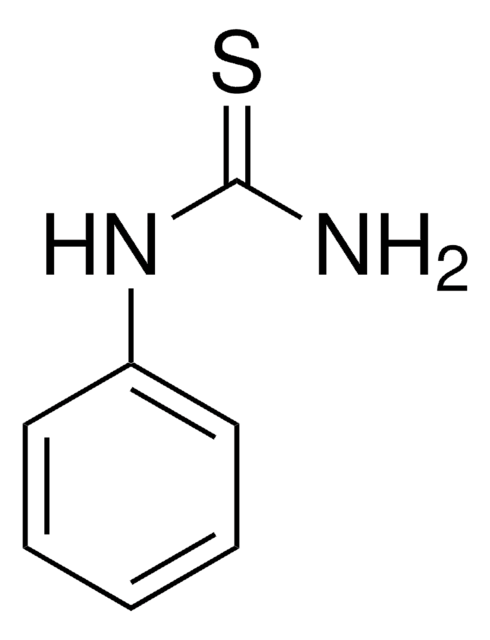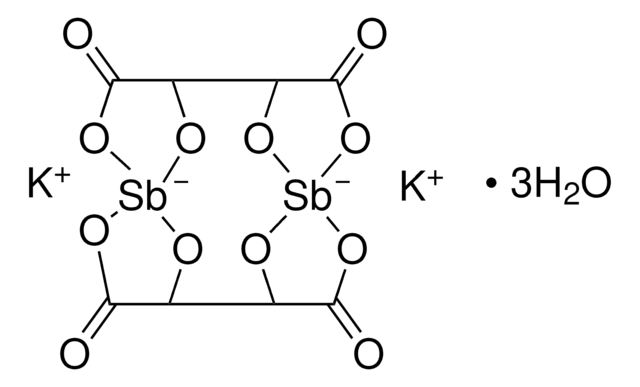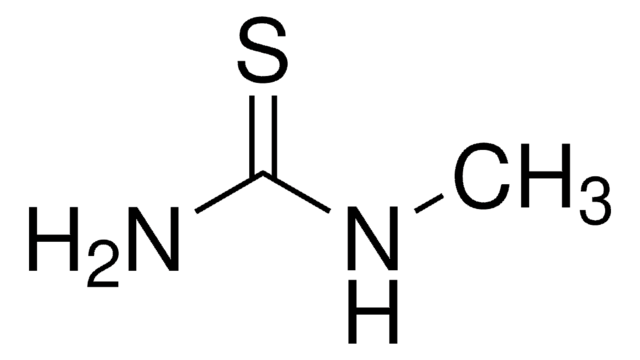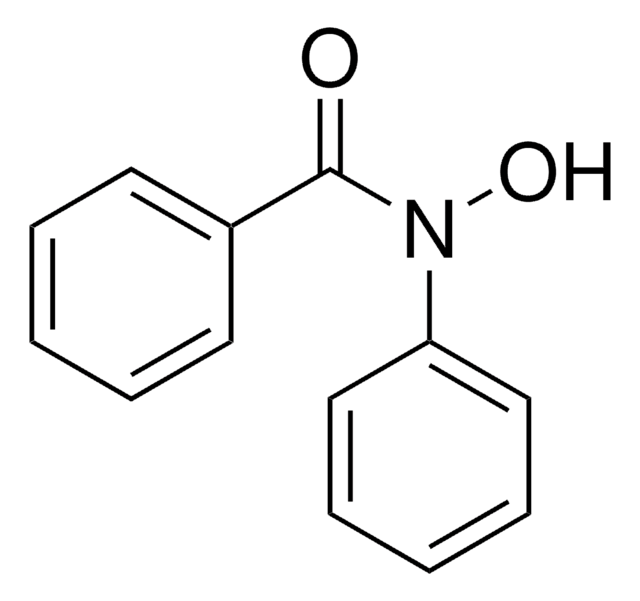108804
N-Allylthiourea
98%
Sinónimos:
1-Allyl-2-thiourea, Thiosinamine
About This Item
Productos recomendados
agency
suitable for SM 5210
Quality Level
assay
98%
form
solid
mp
70-72 °C (lit.)
solubility
H2O: soluble 30 parts
alcohol: soluble
benzene: insoluble
diethyl ether: slightly soluble
density
1.11 g/mL at 25 °C (lit.)
functional group
amine
thiourea
SMILES string
NC(=S)NCC=C
InChI
1S/C4H8N2S/c1-2-3-6-4(5)7/h2H,1,3H2,(H3,5,6,7)
InChI key
HTKFORQRBXIQHD-UHFFFAOYSA-N
¿Está buscando productos similares? Visita Guía de comparación de productos
Categorías relacionadas
Application
Biochem/physiol Actions
signalword
Danger
hcodes
Hazard Classifications
Acute Tox. 3 Oral
Storage Class
6.1C - Combustible acute toxic Cat.3 / toxic compounds or compounds which causing chronic effects
wgk_germany
WGK 3
flash_point_f
Not applicable
flash_point_c
Not applicable
ppe
Eyeshields, Faceshields, Gloves, type P2 (EN 143) respirator cartridges
Elija entre una de las versiones más recientes:
¿Ya tiene este producto?
Encuentre la documentación para los productos que ha comprado recientemente en la Biblioteca de documentos.
Los clientes también vieron
Nuestro equipo de científicos tiene experiencia en todas las áreas de investigación: Ciencias de la vida, Ciencia de los materiales, Síntesis química, Cromatografía, Analítica y muchas otras.
Póngase en contacto con el Servicio técnico

